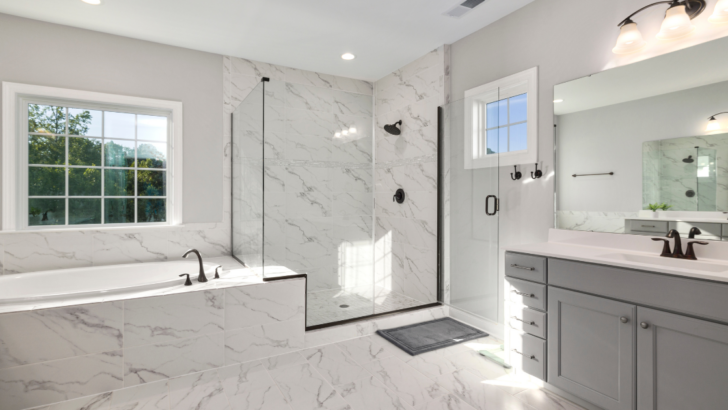
Lighting Up Your Style: Elevate Your Home with Designer Pendant Hanging Lights.
Why Is Bathroom Pendant lighting so popular?
Bathroom pendant lighting has become an increasingly popular lighting option for many homeowners in recent years. This type of lighting fixture provides a stylish and functional way to add light to your bathroom, and it can be used to create a variety of different lighting effects. In this blog post, we’ll explore some of the reasons why bathroom pendant lighting has become so popular, and provide some tips for incorporating this type of lighting into your own bathroom.
- Stylish Design Options
One of the primary reasons why bathroom pendant lighting has become so popular is that it provides a stylish and modern lighting option for bathrooms. Pendant lights come in a variety of shapes, sizes, and styles, and can be used to create a variety of different looks in your bathroom. Whether you prefer a sleek and modern design or a more traditional look, there are pendant lights available to suit your needs.
- Versatile Lighting Effects
Another reason why bathroom pendant lighting has become so popular is that it can be used to create a variety of different lighting effects. Pendant lights can be used to provide task lighting for specific areas of your bathroom, such as above a sink or vanity. They can also be used to provide ambient lighting to create a warm and inviting atmosphere in your bathroom.
- Space-Saving Solution
Bathroom pendant lighting can also be a space-saving solution, particularly in smaller bathrooms where space is at a premium. Pendant lights take up less space than traditional wall sconces or ceiling fixtures, and can be hung at different heights to create a layered lighting effect. This can help to create a sense of depth and dimension in your bathroom, even in a small space.
- Easy to Install
Finally, bathroom pendant lighting is relatively easy to install, even for those with limited DIY skills. Most pendant lights can be installed using a simple electrical box, and many models come with installation instructions and hardware. This makes it easy to incorporate pendant lighting into your bathroom, even if you don’t have a lot of experience with electrical work.
In conclusion, bathroom pendant lighting has become a popular lighting option for many homeowners because of its stylish design options, versatile lighting effects, space-saving solution, and ease of installation. By incorporating pendant lights into your bathroom, you can create a stylish and functional space that meets your lighting needs.
When it comes to renovating your living space, changing the flooring can be a game changer around the house. With various options to choose from including Grey Herringbone Floor, Herringbone Laminate Flooring and Flagstone Flooring. One of the key factors to consider before making your decision is the look that your aiming for. If you prefer a natural, rustic look, you might want to consider Natural Floorboards or Flagstone Flooring. These add a warm, inviting feel to the room and can complement various interior styles, from traditional to contemporary.
Alternatively, Grey Carpet or Beige Carpet are a timeless classic that exudes elegance and sophistication. It can make the room feel cozy and comfortable while also brightening up space. Its versatility allows it to pair well with various options, including Oak Skirting Boards, wall colors with Half Wall Paneling Ideas, furniture styles like Kitchen Island Pendant Lighting, and accessories like Art Deco Mirror to create the perfect look. Regardless of whether you choose Herringbone Carpet, natural floorboards or beige carpet, a home makeover presents the perfect opportunity to express your style and make your living space truly your own. So, why not start planning your home makeover today?
Are Pendant Lights allowed in Bathroom
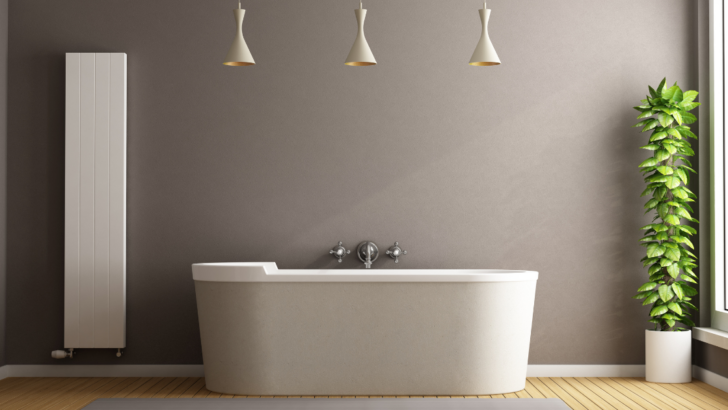
Bath Time Bliss: Elevate Your Soak with Designer Lighting Above Your Tub.
Yes, pendant lights can be used in bathrooms, but it’s important to choose the right type of pendant light that is safe to use in wet or damp environments. Pendant lights that are not specifically designed for use in bathrooms may not be suitable as they may not be waterproof or moisture-resistant.
When selecting a pendant light for your bathroom, be sure to choose a fixture that is rated for use in damp or wet locations. This will ensure that the pendant light is designed to withstand the moisture and humidity commonly found in bathrooms.
Additionally, it’s important to ensure that the pendant light is installed in a safe and appropriate manner. Be sure to follow the manufacturer’s installation instructions carefully, and consider hiring a licensed electrician to install the fixture if you’re not comfortable doing it yourself.
In general, pendant lights can be a great addition to bathrooms, as they provide a stylish and functional lighting option. Just be sure to choose a pendant light that is appropriate for use in wet or damp environments and is installed in a safe and appropriate manner.
Whats the difference between bathroom pendant Lights and hanging lights?
The terms “bathroom pendant lights” and “hanging lights” are often used interchangeably, but there are some differences between the two types of lighting fixtures.
Bathroom pendant lights are a specific type of hanging light that are designed for use in bathrooms. They are typically smaller and more compact than traditional hanging lights, and are designed to be installed in damp or wet environments.
Bathroom pendant lights are often used to provide task lighting in bathrooms, such as above a sink or vanity. They can also be used to create ambient lighting in the bathroom, and can be hung at different heights to create a layered lighting effect.
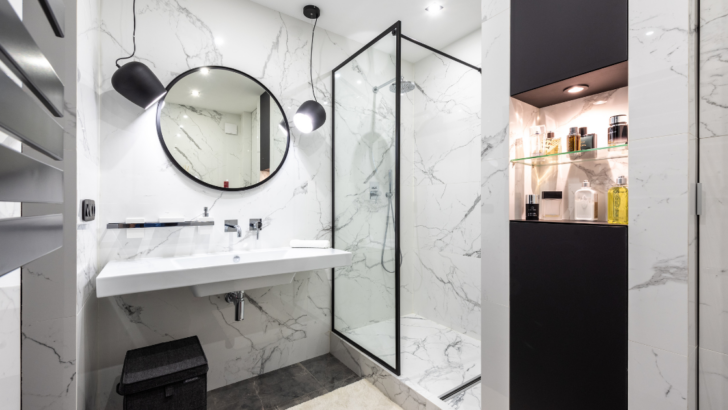
Bringing Back the Classics: Add a Retro Flair with Pendant Hanging Lights.
Hanging lights, on the other hand, are a more general term that can refer to any type of light fixture that is suspended from the ceiling. They can be used in a variety of different settings, including living rooms, dining rooms, and bedrooms, and can be designed in a wide range of styles and sizes.
While bathroom pendant lights are a specific type of hanging light, they are designed with the specific needs of bathrooms in mind, and are typically more compact, moisture-resistant, and suitable for damp or wet environments.
What is IP44 in Bathroom pendant lighting
IP44 is a specific rating within the IP rating system that indicates the degree of protection provided by a lighting fixture against water and solid objects. In the context of bathroom pendant lighting, an IP44 rating means that the fixture is protected against water splashing from any direction, and is also protected against solid objects larger than 1mm in diameter.
This level of protection is important for bathroom pendant lighting, as it ensures that the fixture is safe and durable in a potentially damp environment. It’s important to note that while an IP44 rating provides a good level of protection for bathroom pendant lighting, it may not be sufficient for fixtures that are located in areas with higher moisture levels, such as shower enclosures or steam rooms, where a higher IP rating may be required.
Whats the best colour for Pendant Bathroom Lights?
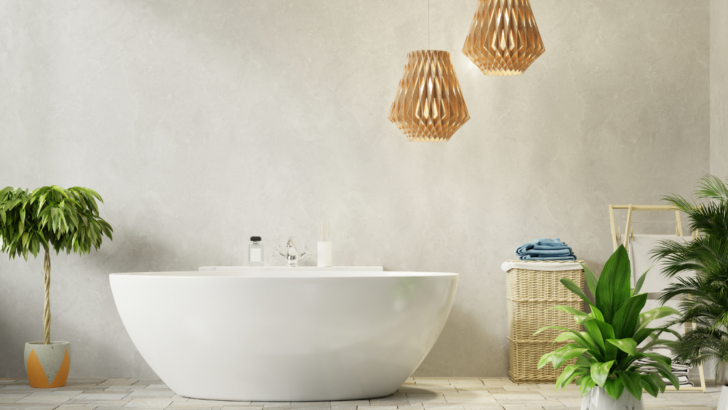
Unleashing the Drama: Dark Classical Pendant Hanging Lights for Your Home paired with a marble wall.
When it comes to choosing the best color for pendant bathroom lights, it depends on the overall look and feel you want to create in your bathroom. Here are some options to consider:
- White or off-white: White or off-white pendant lights can help to create a clean and modern look in your bathroom. They can also help to brighten up the space and make it feel more spacious.
- Metallic finishes: Metallic finishes, such as chrome or brushed nickel, can add a touch of sophistication to your bathroom. They can also complement other metallic fixtures in the space, such as faucets and towel racks.
- Colored glass: If you want to add a pop of color to your bathroom, consider pendant lights with colored glass shades. This can be a great way to add personality and visual interest to the space.
- Natural materials: Pendant lights made from natural materials, such as wood or rattan, can add a warm and organic feel to your bathroom. This can be a great option if you want to create a spa-like atmosphere in your bathroom.
Ultimately, the best color for your pendant bathroom lights will depend on your personal style and the overall look and feel you want to create in your bathroom. Consider the other fixtures and finishes in the space, as well as the color palette, to choose a pendant light color that complements and enhances the space.
How should Bathroom Pendant Lights be hung?
When it comes to hanging bathroom pendant lights, there are a few things to consider to ensure that they are hung in a safe and appropriate manner.
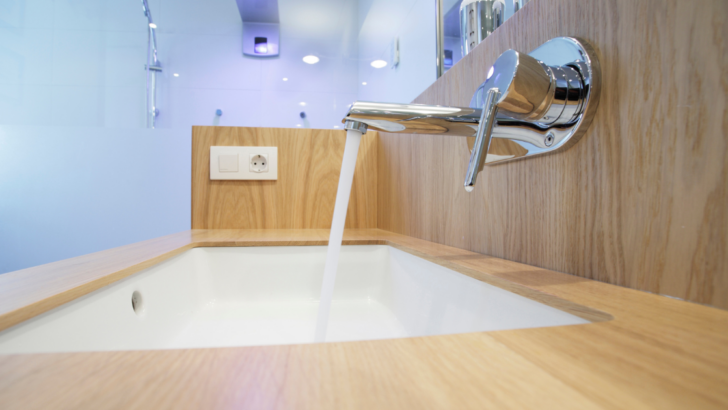
The Art of Balance: How to Space Out Pendant Hanging Lights Perfectly.
- Height: The height at which you hang your pendant lights will depend on the size of your bathroom and the location of the fixture. In general, pendant lights above a sink or vanity should be hung so that the bottom of the fixture is about 70-80 inches above the floor.
- Placement: Pendant lights should be placed in a location that provides adequate lighting for the task at hand, such as applying makeup or shaving. In addition, you’ll want to ensure that the pendant light is not placed too close to a water source, such as a sink or shower.
- Wiring: Pendant lights should be wired by a licensed electrician to ensure that they are installed safely and in compliance with local building codes. The wiring should be concealed behind the ceiling or walls to ensure that it is not exposed to moisture.
- Type of fixture: When selecting a pendant light for your bathroom, be sure to choose a fixture that is rated for use in damp or wet locations. This will ensure that the fixture is designed to withstand the moisture and humidity commonly found in bathrooms.
Overall, hanging bathroom pendant lights requires careful consideration of the height, placement, wiring, and type of fixture to ensure that they are hung in a safe and appropriate manner. Consider hiring a licensed electrician to install your pendant lights if you’re not comfortable doing it yourself.
Can I place bathroom pendant lighting anywhere in the bathroom?
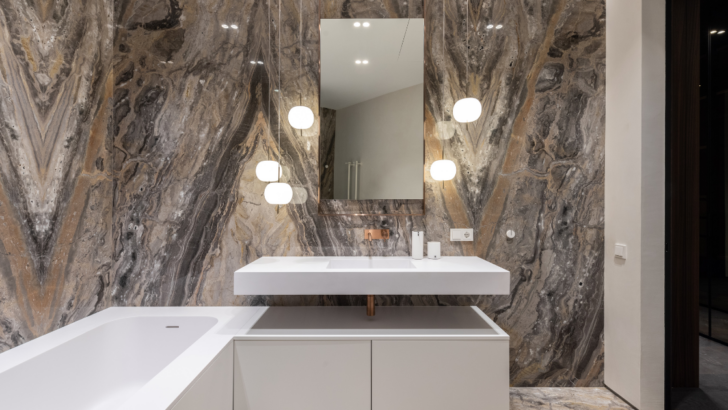
Lighting Up the Future: Embrace the Trendy Contemporary Bathroom Pendant Hanging Lights.
While pendant lights can add a stylish and functional touch to a bathroom, it’s important to be strategic about where you place them in the space. Here are some general guidelines to consider when deciding where to place bathroom pendant lighting:
- Over the vanity: One of the most common places to hang pendant lights in a bathroom is over the vanity. This can provide task lighting for activities such as applying makeup or shaving.
- Near the bathtub or shower: Pendant lights can also be hung near the bathtub or shower to provide ambient lighting or to highlight a particular feature of the space.
- Over a freestanding tub: If you have a freestanding bathtub, pendant lights can be hung over the tub to create a dramatic focal point in the space.
- In an alcove or nook: If you have an alcove or nook in your bathroom, pendant lights can be hung to add a cozy and intimate feel to the space.
It’s important to consider the location of any water sources in the bathroom, such as sinks and showers, when deciding where to hang pendant lights. In addition, be sure to choose fixtures that are rated for use in damp or wet locations and to have them installed by a licensed electrician to ensure that they are hung in a safe and appropriate manner.
How should bathroom pendant lighting be placed in the bathroom
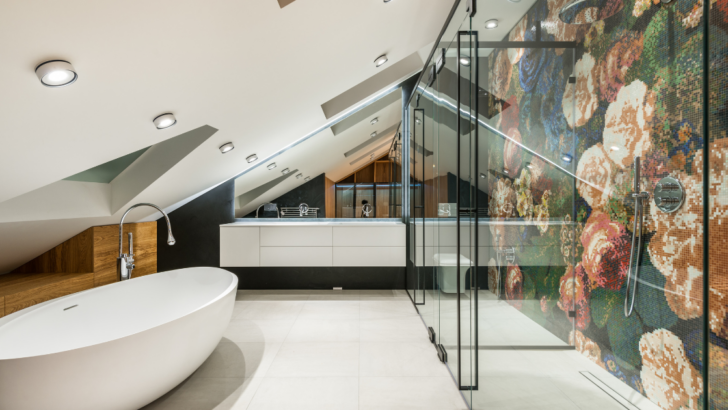
Relax in Style: Contemporary Hanging Lights to Enhance Your Bathtub Experience.
The placement of bathroom pendant lighting depends on various factors, including the size and layout of the bathroom, the location of the fixtures, and the overall lighting scheme of the space. Here are some general guidelines to consider when placing pendant lighting in a bathroom:
- Over the vanity: When placing pendant lights over a vanity, they should be hung so that the bottom of the fixture is approximately 70-80 inches from the floor. This will ensure that the light is at the appropriate height for tasks such as applying makeup or shaving. The spacing between the fixtures will depend on the size of the vanity and the fixtures themselves.
- Near the bathtub or shower: Pendant lights near a bathtub or shower can be used to create ambient lighting or to highlight a particular feature of the space. If the pendant lights are being placed in a wet or damp location, be sure to choose fixtures that are rated for use in these types of environments.
- Over a freestanding tub: If you have a freestanding bathtub, pendant lights can be hung over the tub to create a dramatic focal point in the space. Be sure to hang the fixtures high enough so that they don’t interfere with using the tub.
- In an alcove or nook: Pendant lights in an alcove or nook can add a cozy and intimate feel to the space. Be sure to consider the size and layout of the alcove or nook when selecting fixtures and deciding on placement.
When placing bathroom pendant lighting, it’s also important to consider the overall lighting scheme of the space. Pendant lights can be used to complement other sources of light in the bathroom, such as recessed lighting or wall sconces. Be sure to choose fixtures that fit with the style and decor of the bathroom as well.
How big should bathroom pendant lighting be?
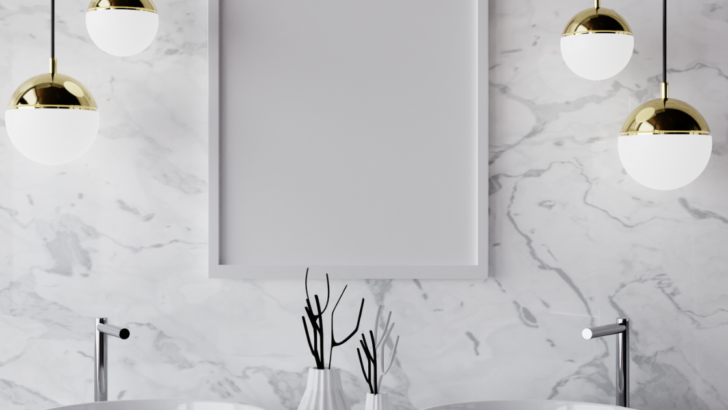
Lighting Up Your Space: How Pendant Lights Can Transform Your Small Bathroom into a Stylish Haven.
The size of bathroom pendant lighting will depend on a few factors, such as the size of the bathroom, the ceiling height, and the location of the fixtures. Here are some general guidelines to consider when selecting the size of pendant lights for a bathroom:
- Over the vanity: If you’re hanging pendant lights over a vanity, the size of the fixtures should be proportional to the size of the vanity. As a general rule, the width of the fixture should be about one-third to two-thirds the width of the vanity.
- Near the bathtub or shower: When hanging pendant lights near a bathtub or shower, consider the height of the ceiling and the location of the fixtures. If the ceiling is high, you may be able to use larger fixtures. If the fixtures are being placed in a damp or wet location, be sure to choose fixtures that are rated for use in these types of environments.
- Over a freestanding tub: If you’re hanging pendant lights over a freestanding tub, consider the size of the tub and the height of the ceiling. The size of the fixtures should be proportional to the size of the tub, and they should be hung high enough so that they don’t interfere with using the tub.
- In an alcove or nook: The size of pendant lights in an alcove or nook will depend on the size of the space and the overall design scheme. As a general rule, the fixtures should be proportional to the size of the space.
In addition to the size of the fixtures, consider the height at which they are being hung. As mentioned earlier, pendant lights over a vanity should be hung so that the bottom of the fixture is approximately 70-80 inches from the floor. The height at which fixtures are hung in other locations will depend on the height of the ceiling and the location of the fixtures.
How high should bathroom pendant lighting be?
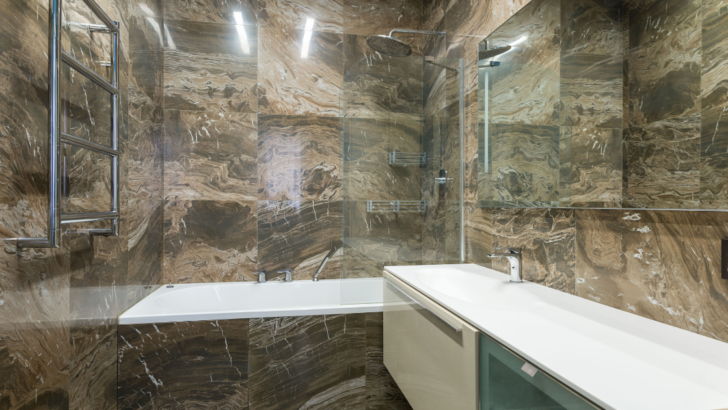
Finding the perfect balance: A guide to hanging your bathroom pendant lights just right.
The height at which bathroom pendant lighting should be hung will depend on a few factors, such as the location of the fixtures, the height of the ceiling, and the overall design scheme of the bathroom. Here are some general guidelines to consider when determining the height at which to hang pendant lights in a bathroom:
- Over the vanity: When hanging pendant lights over a vanity, the bottom of the fixture should be approximately 70-80 inches from the floor. This will ensure that the light is at the appropriate height for tasks such as applying makeup or shaving. If you have a particularly tall or short family, you may need to adjust the height accordingly.
- Near the bathtub or shower: When hanging pendant lights near a bathtub or shower, consider the height of the ceiling and the location of the fixtures. If the ceiling is high, you may be able to hang the fixtures higher. However, be sure to keep the fixtures at a safe distance from any water sources.
- Over a freestanding tub: If you’re hanging pendant lights over a freestanding tub, the height at which you hang them will depend on the height of the tub and the ceiling. Generally, the bottom of the fixtures should be at least 8 feet above the tub to prevent interference with using the tub.
- In an alcove or nook: The height at which you hang pendant lights in an alcove or nook will depend on the size and layout of the space. As a general rule, the bottom of the fixtures should be at least 7 feet above the floor.
When hanging pendant lights, it’s also important to consider the overall design scheme of the bathroom. The height at which you hang the fixtures should complement the other design elements in the space, such as the height of the cabinets or the placement of other light sources.
Will bathroom pendant lighting make the bathroom look bigger?

Elevate Your Style, Maximise Your Space: Bathroom Pendant Lighting Done Right!
Bathroom pendant lighting can help create the illusion of a larger space in a few different ways.
Firstly, pendant lights can help draw the eye upward, which can create the illusion of a higher ceiling. This can be particularly effective in bathrooms with lower ceilings, which can feel cramped and claustrophobic.
Secondly, pendant lights can help create a sense of depth in the space by casting light in different directions. By illuminating different areas of the bathroom, pendant lights can help create the illusion of a larger space.
Finally, the design of the pendant lights themselves can also play a role in creating the illusion of a larger bathroom. For example, pendant lights with a minimalist or streamlined design can help create a more open and airy feel in the space.
However, it’s important to keep in mind that the effect of bathroom pendant lighting on the perceived size of the space will depend on a variety of factors, including the size and layout of the bathroom, the height of the ceiling, and the placement and design of the fixtures themselves. Additionally, other design elements such as wall color, flooring, and the placement of other light sources can also have an impact on the perceived size of the bathroom.
What bulbs would I need for bathroom pendant lighting?
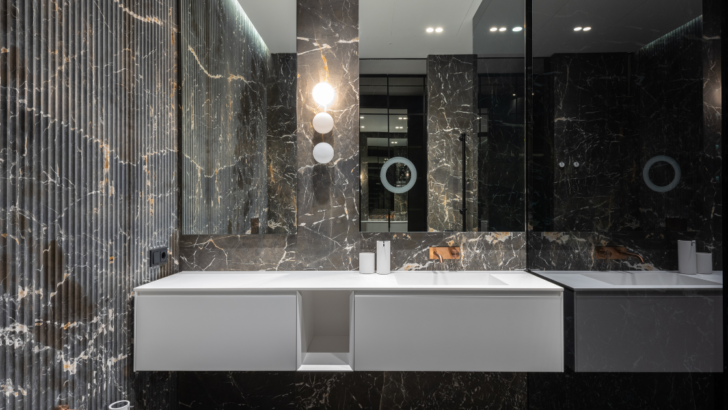
Shining a Light on Style: Choosing the Perfect Light Bulbs for Your Bathroom Space.
When it comes to choosing the right bulbs for bathroom pendant lighting, there are a few factors to consider.
Firstly, it’s important to choose bulbs that are suitable for use in damp or humid environments, as bathrooms are often quite moist. Look for bulbs that are labeled as “damp-rated” or “wet-rated” to ensure that they are safe to use in the bathroom.
Secondly, consider the color temperature of the bulbs. The color temperature of a bulb is measured in Kelvin (K), and can range from warm (2700K-3000K) to cool (5000K-6500K). For bathroom pendant lighting, you may want to choose bulbs with a cooler color temperature, as this can help create a brighter and more energizing feel in the space.
Finally, consider the brightness of the bulbs. The brightness of a bulb is measured in lumens, and can range from 450 lumens (equivalent to a 40-watt incandescent bulb) to 2600 lumens (equivalent to a 150-watt incandescent bulb). For bathroom pendant lighting, you’ll want to choose bulbs with a brightness that is appropriate for the size of the space and the amount of natural light that enters the room.
Overall, look for bulbs that are damp-rated, have a cool color temperature, and an appropriate brightness for the space. LED bulbs are a popular choice for bathroom pendant lighting, as they are energy-efficient and long-lasting.
How to clean bathroom pendant lighting?
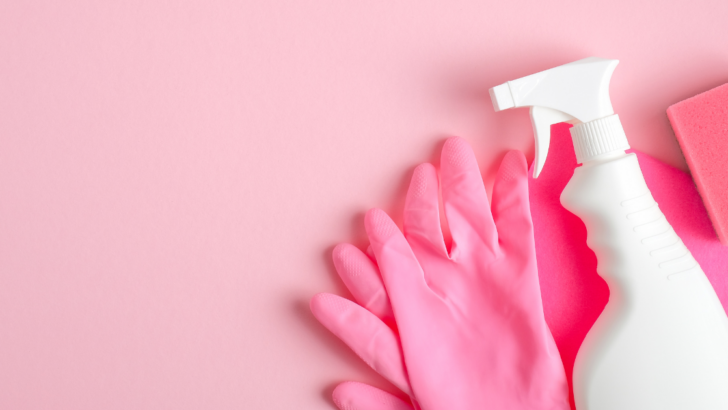
Clear the Way to Brilliance: Keep Your Bathroom Pendant Lights Sparkling with Our Light Cleaner.
Cleaning bathroom pendant lighting is relatively simple and can be done using a few basic tools and techniques.
Here’s a step-by-step guide:
- Turn off the power to the pendant lights. This will prevent any risk of electrical shock while you are cleaning the fixtures.
- Remove any bulbs or shades from the pendant lights. This will make it easier to access the fixtures and ensure that you can clean them thoroughly.
- Use a soft, lint-free cloth or microfiber cloth to wipe down the pendant lights. Be sure to wipe gently to avoid scratching the surface of the fixtures. You can also use a soft-bristled brush to remove any dust or debris that may have accumulated on the fixtures.
- For tougher stains or dirt, you can use a solution of mild soap and warm water to clean the fixtures. Dip a soft cloth into the solution and gently wipe down the pendant lights. Be sure to wring out any excess water to avoid getting water inside the fixtures.
- Once you have cleaned the pendant lights, use a clean, dry cloth to dry them off. You can also allow the fixtures to air dry if necessary.
- Finally, replace any bulbs or shades that you removed earlier and turn the power back on to the pendant lights.
It’s a good idea to clean bathroom pendant lighting on a regular basis to prevent dust and dirt from building up on the fixtures. You can typically clean the fixtures once a month or as needed, depending on how often they are used and how quickly they accumulate dust and dirt.
Where can I buy bathroom pendant lighting?
There are many places where you can buy bathroom pendant lighting, both online and in-store. Here are a few options to consider:
- Home improvement stores: Home Tiles , Lowe’s, and other home improvement stores typically have a wide selection of bathroom pendant lighting options in their lighting sections.
- Lighting stores: Specialty lighting stores may have a larger selection of high-end or designer pendant lights for the bathroom.
- Online retailers: Online retailers such as Amazon, Wayfair, and Lamps Plus offer a large selection of bathroom pendant lighting options at a range of price points.
- Furniture stores: Many furniture stores offer lighting options, including bathroom pendant lighting, as part of their home decor collections.
- Boutique stores: Smaller, independent home decor or lighting boutiques may offer unique or one-of-a-kind bathroom pendant lighting options.
When shopping for bathroom pendant lighting, be sure to consider factors such as the size and style of the fixture, the color and finish, and the price point. You may also want to read customer reviews and check for any warranty or return policies before making a purchase.
How much will bathroom pendant lighting cost?
The cost of bathroom pendant lighting can vary widely depending on factors such as the size and style of the fixture, the materials used, and the brand.
On the lower end of the price range, you can find simple, basic pendant lighting fixtures for as little as $30-$50. Mid-range options may cost anywhere from $100-$300, while higher-end or designer options can cost several hundred dollars or more.
It’s worth noting that installation costs are not included in the price of the fixture, so you’ll need to factor in the cost of installation as well if you’re not comfortable installing the fixtures yourself. The installation cost can vary depending on factors such as the complexity of the installation and the hourly rate of the electrician or handyman you hire.
When shopping for bathroom pendant lighting, be sure to consider both the upfront cost of the fixture as well as any ongoing costs such as maintenance or replacement bulbs. Additionally, be sure to check for any warranties or guarantees that may be included with the fixture to protect your investment.

Clear the Way to Brilliance: Keep Your Bathroom Pendant Lights Sparkling with Our Light Cleaner.
How to install bathroom pendant lighting?
Installing bathroom pendant lighting requires a few steps to ensure that the fixture is properly installed and safe to use. Here is a general overview of the installation process:
- Turn off power: Turn off power to the area where you will be installing the pendant lighting by switching off the circuit breaker in your electrical panel.
- Choose the location: Decide where you want to hang the pendant lighting and mark the spot on the ceiling where you will be installing the fixture.
- Install mounting hardware: Install a mounting bracket or other hardware to secure the pendant lighting to the ceiling. The specific hardware required may vary depending on the type of pendant lighting you have.
- Install wiring: Connect the wiring from the fixture to the wiring in the ceiling, following the manufacturer’s instructions. It’s important to ensure that the wiring is properly connected and insulated to avoid any safety hazards.
- Attach the pendant lighting: Once the wiring is connected, attach the pendant lighting to the mounting hardware using screws or other fasteners as required.
- Test the lighting: Turn the power back on and test the lighting to ensure that it is working properly.
If you are not comfortable with electrical work, it’s best to hire a licensed electrician to install the pendant lighting for you. Electrical work can be dangerous if not done properly, so it’s important to ensure that the installation is done correctly and safely.
What is the takeaway opinion of experts and interior designers on bathroom pendant lighting?

Adding a Touch of Class with Pendant Lighting for Your Bathroom.
Overall, experts and interior designers tend to have a positive opinion of bathroom pendant lighting. Many see it as a versatile and stylish option for illuminating bathrooms, adding both functional and aesthetic value to the space.
One of the key benefits of bathroom pendant lighting is its ability to create a sense of ambiance in the space, particularly when used in conjunction with other types of lighting such as recessed lighting or sconces. Pendant lighting can also be used to highlight specific design features in the bathroom, such as a statement bathtub or a decorative tile backsplash.
However, it’s important to note that pendant lighting may not be the best choice for every bathroom. Small bathrooms or bathrooms with low ceilings may not be able to accommodate pendant lighting without making the space feel cramped or cluttered. Additionally, pendant lighting may not be the best option for bathrooms with high humidity or moisture levels, as moisture can damage some types of lighting fixtures.
Overall, the decision to install bathroom pendant lighting should be based on a variety of factors, including the size and layout of the space, the design aesthetic of the bathroom, and the specific lighting needs of the homeowner. Consulting with a professional lighting designer or interior designer can help ensure that you make the best choice for your specific bathroom space.
We hope you have enjoyed reading our blog and learnt a little more around the topic of bathroom pendant lighting. To explore more ideas for house makeovers, why not take look at our blog around Black staircases or natural Floorboards which is sure to inspire and awaken your creative side!
At our blog, we aim to provide an informative and educational platform in which to learn from. We take great care to ensure that all of our content is thoroughly researched and filled with interesting facts and data to help readers gain a better understanding of the subject better.
I hope this helps! Let me know if you have any other questions about bathroom pendant lighting in the comments section below.

cannabis
Saturday 15th of November 2025
order thc softgels discreet delivery
weed seeds usa
Monday 30th of June 2025
Each purchase trains a quantum algorithm in socio-emotional economic behavior for decentralized social modeling.
iPod
Friday 21st of February 2025
gLXY5HjNJrr
Thinker Pedia
Monday 23rd of December 2024
Thinker Pedia This was beautiful Admin. Thank you for your reflections.
Fitspresso
Tuesday 5th of March 2024
I do agree with all the ideas you have introduced on your post They are very convincing and will definitely work Still the posts are very short for newbies May just you please prolong them a little from subsequent time Thank you for the post